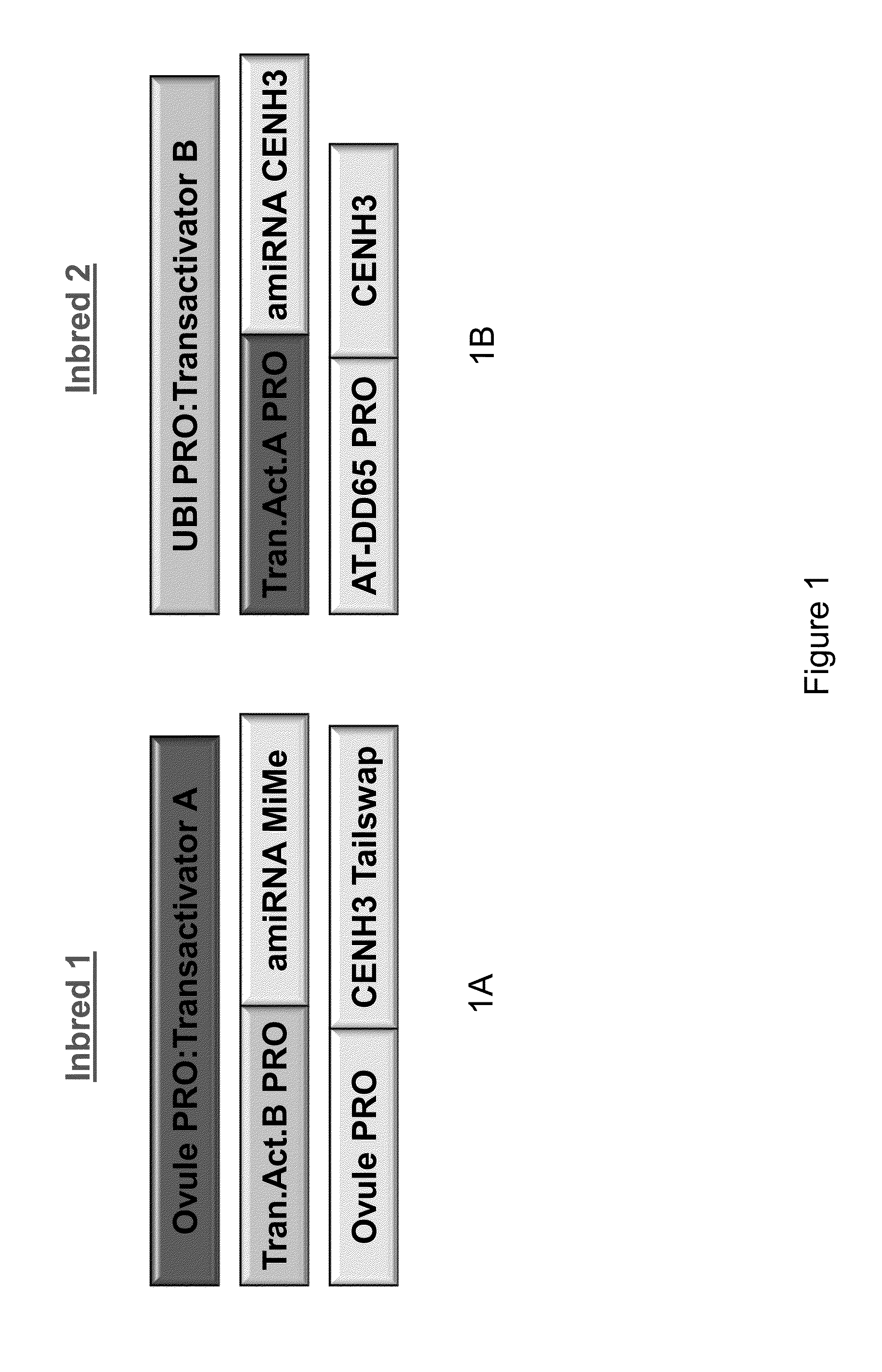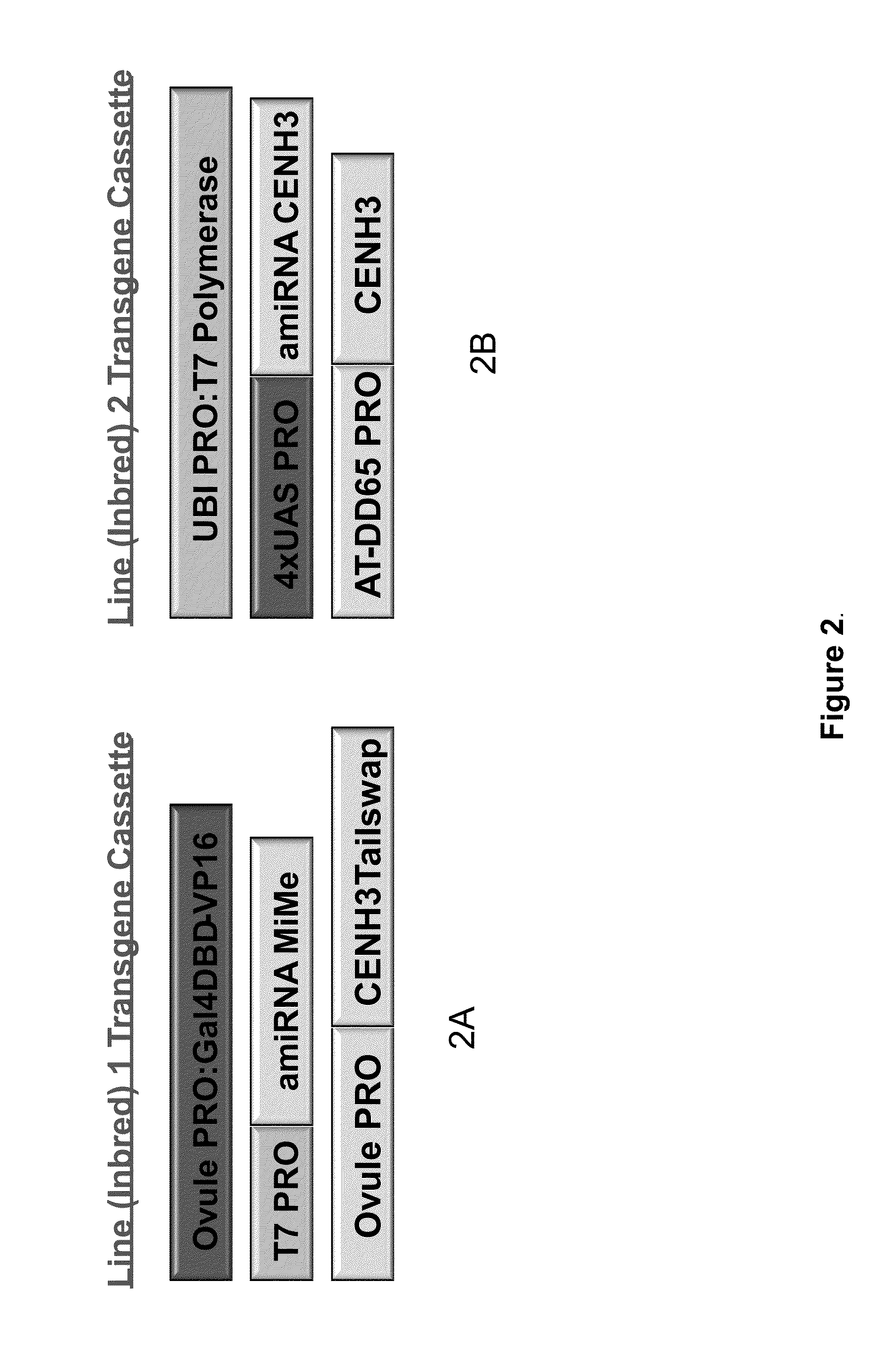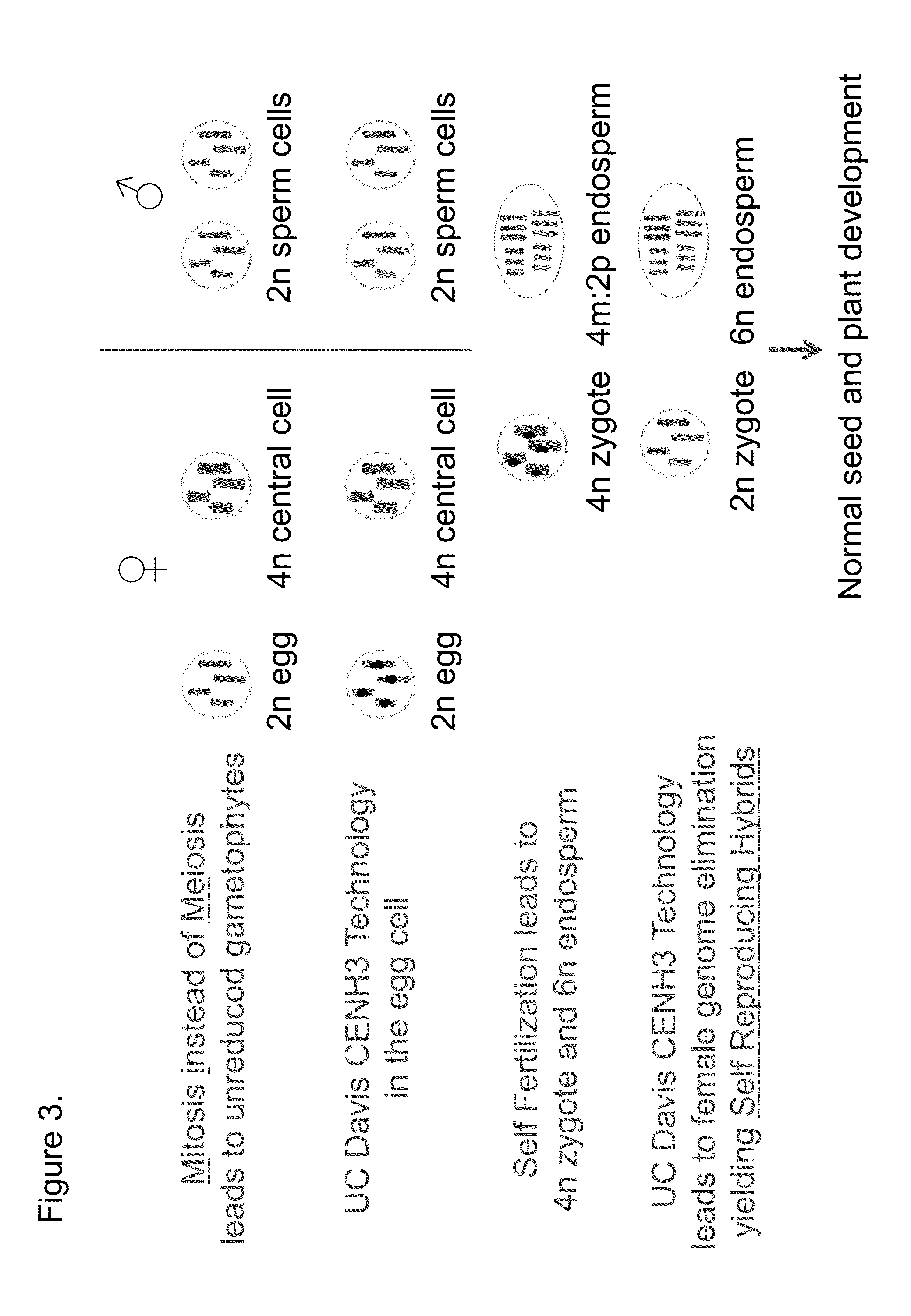Self-Reproducing Hybrid Plants
a hybrid plant and self-reproducing technology, applied in the field of plants genetic manipulation, can solve the problems of pollen vectoring, poor pollen flow from male to female inbreds, and never developed hybrid soybeans, and achieve the effect of reducing the level of wild-type cenh3
- Summary
- Abstract
- Description
- Claims
- Application Information
AI Technical Summary
Benefits of technology
Problems solved by technology
Method used
Image
Examples
example 1
Plant Material and Growth Conditions
[0128]Plants were grown in artificial soil mix at 20° C. under fluorescent lighting. Wild-type and mutant strains of Arabidopsis were obtained from ABRC, Ohio or NASC, UK. dyad was crossed to the No-0 strain to generate populations that were heterozygous for markers across the genome. MiMe plants were a mixture of Col-0 from Atspo11-1-3 / Atrec8-3 and No-0 from osd1-1 (S1). The GEM plants used in this study are F1 progeny obtained by crossing cenh3-1 / cenh3-1 GFP-tailswap / GFP-tailswap (female) to cenh3-1 / cenh3-1 GFPCENH3 / GFP-CENH3 (male).
[0129]cenh3-1 was isolated by the TILLING procedure (Comai and Henikoff, (2006) Plant J 45:684-94). The TILLING population was created by mutagenizing Arabidopsis thaliana in the Col-0 accession with ethylmethanesulfonate, using standard protocols. Cenh3-1 was isolated by TILLING using the CEL1 heteroduplex cleavage assay, with PCR primers specific for the CENH3 / HTR12 gene. Cloning of the GFP-CENH3 and GFP-tailswap t...
example 2
Genotyping and Microsatellite Marker Analysis
[0132]Primers for osd1-1, Atspo11-1-3 and Atrec8-3 (MiMe) genotyping are described (S1). Microsatellite markers were analyzed. Primer sequences were obtained from TAIR (www.Arabidopsis.org) or from the MSAT database (INRA). cenh3-1: a point mutation G161A in the CENH3 gene (also known as, HTR12) detected with dCAPS primers (dCAPs restriction polymorphism with EcoRV, the wild-type allele cuts):
Primer 1: (SEQ ID NO: 6)GGTGCGATTTCTCCAGCAGTAAAAATC Primer 2: (SEQ ID NO: 7)CTGAGAAGATGAAGCACCGGCGATAT
Detection of GFP-Tailswap Insertion on Chromosome 1:
[0133]
Primer 1 for wild-type and T-DNA: (SEQ ID NO: 8)CACATACTCGCTACTGGTCAGAGAATC Primer 2 for wild-type only: (SEQ ID NO: 9)CTGAAGCTGAACCTTCGTCTCG Primer 3 for the T-DNA: (SEQ ID NO: 10)AATCCAGATCCCCCGAATTA Primers for detection of GFP-CENH3:(SEQ ID NO: 11)CAGCAGAACACCCCCATC (in GFP)(SEQ ID NO: 12)CTGAGAAGATGAAGCACCGGCGATAT (in CENH3)
Ploidy Analysis
PUM
| Property | Measurement | Unit |
|---|---|---|
| nucleic acid | aaaaa | aaaaa |
| disease resistances | aaaaa | aaaaa |
| genomic heterogeneity | aaaaa | aaaaa |
Abstract
Description
Claims
Application Information
 Login to View More
Login to View More - R&D
- Intellectual Property
- Life Sciences
- Materials
- Tech Scout
- Unparalleled Data Quality
- Higher Quality Content
- 60% Fewer Hallucinations
Browse by: Latest US Patents, China's latest patents, Technical Efficacy Thesaurus, Application Domain, Technology Topic, Popular Technical Reports.
© 2025 PatSnap. All rights reserved.Legal|Privacy policy|Modern Slavery Act Transparency Statement|Sitemap|About US| Contact US: help@patsnap.com



